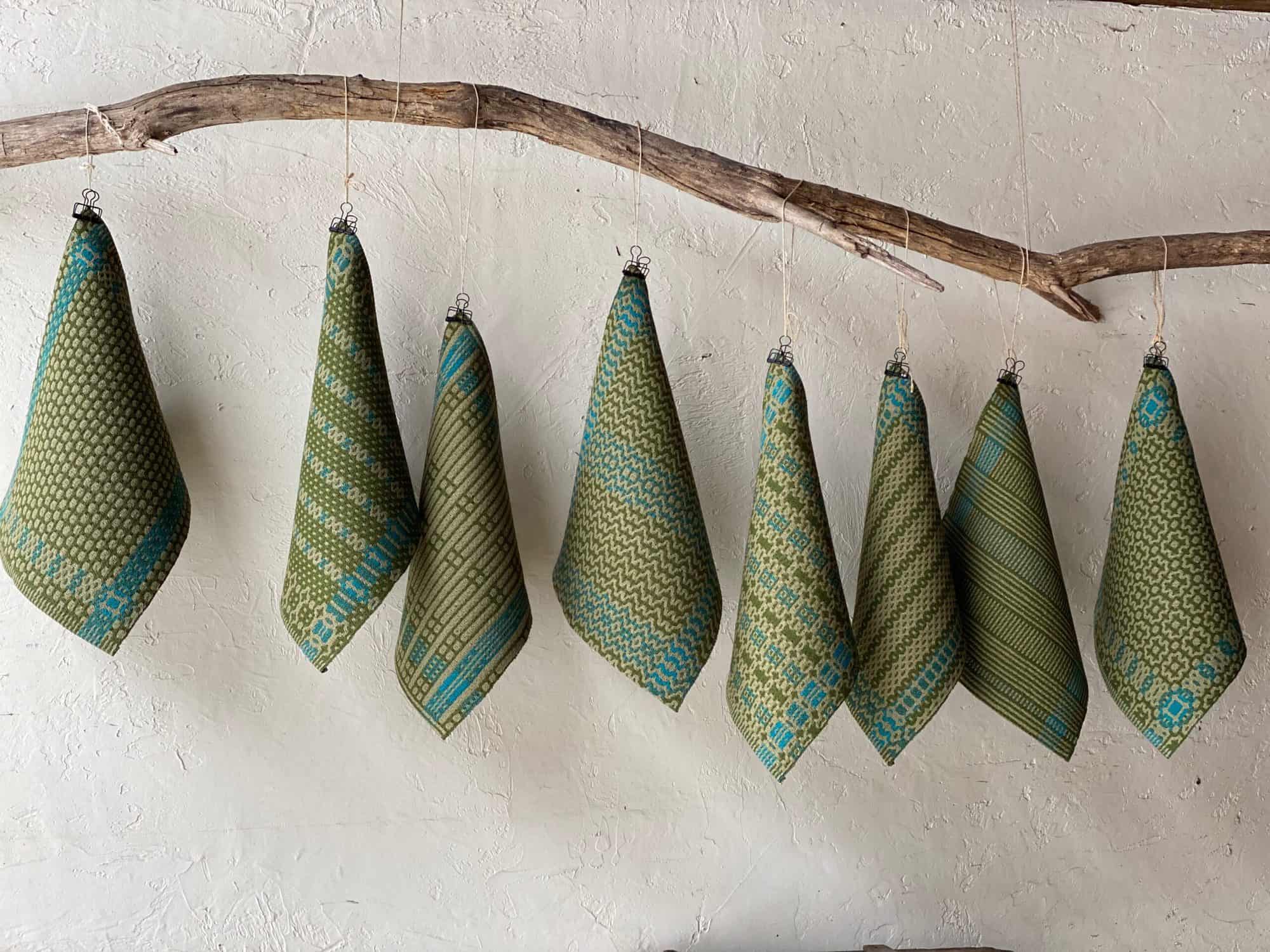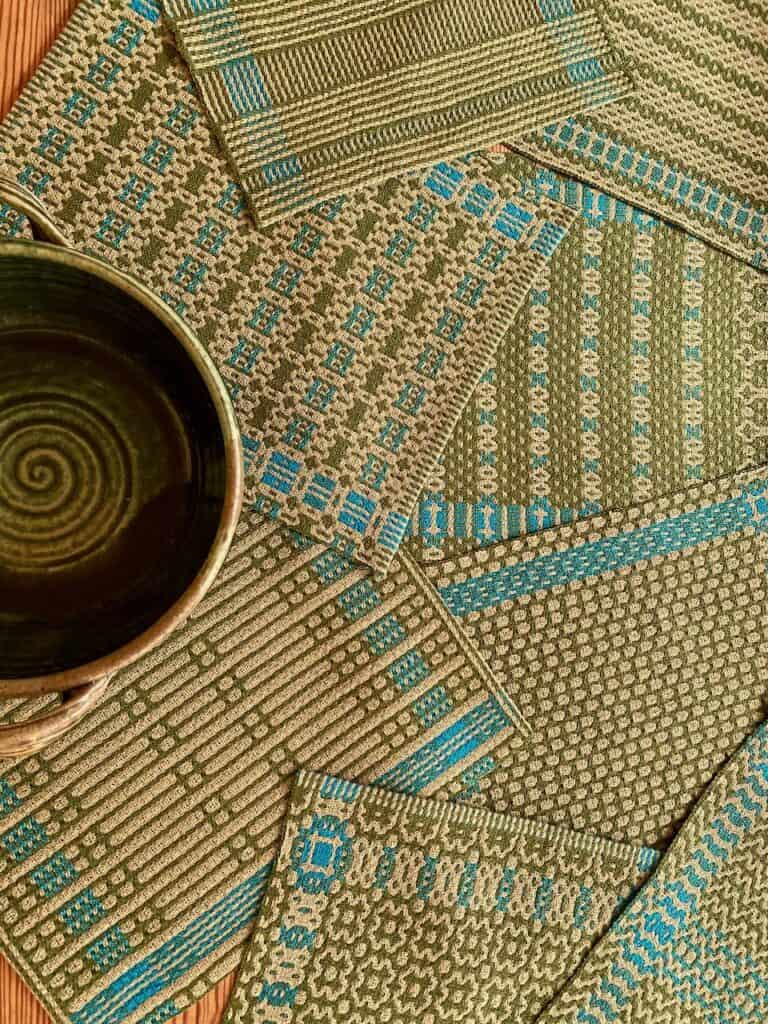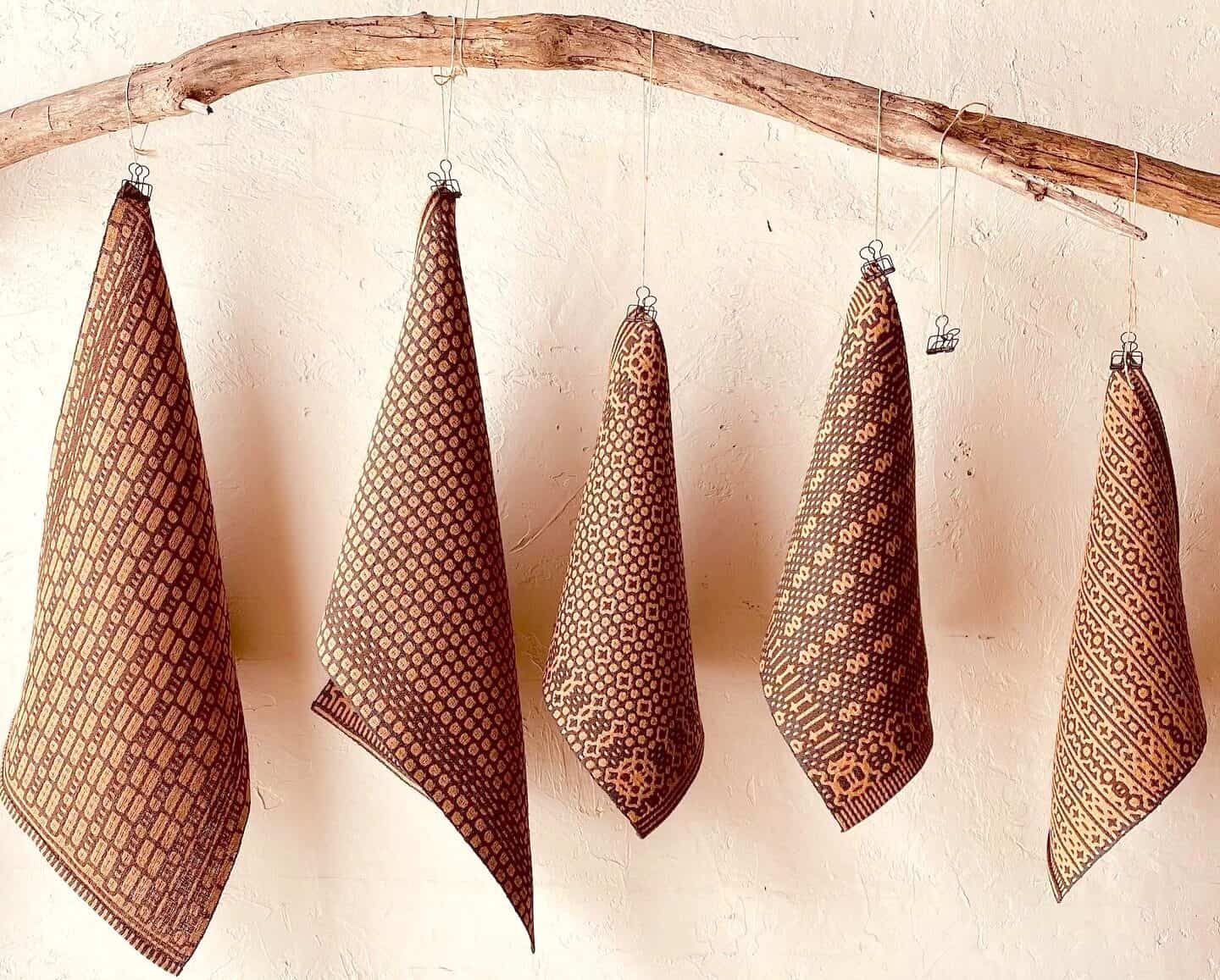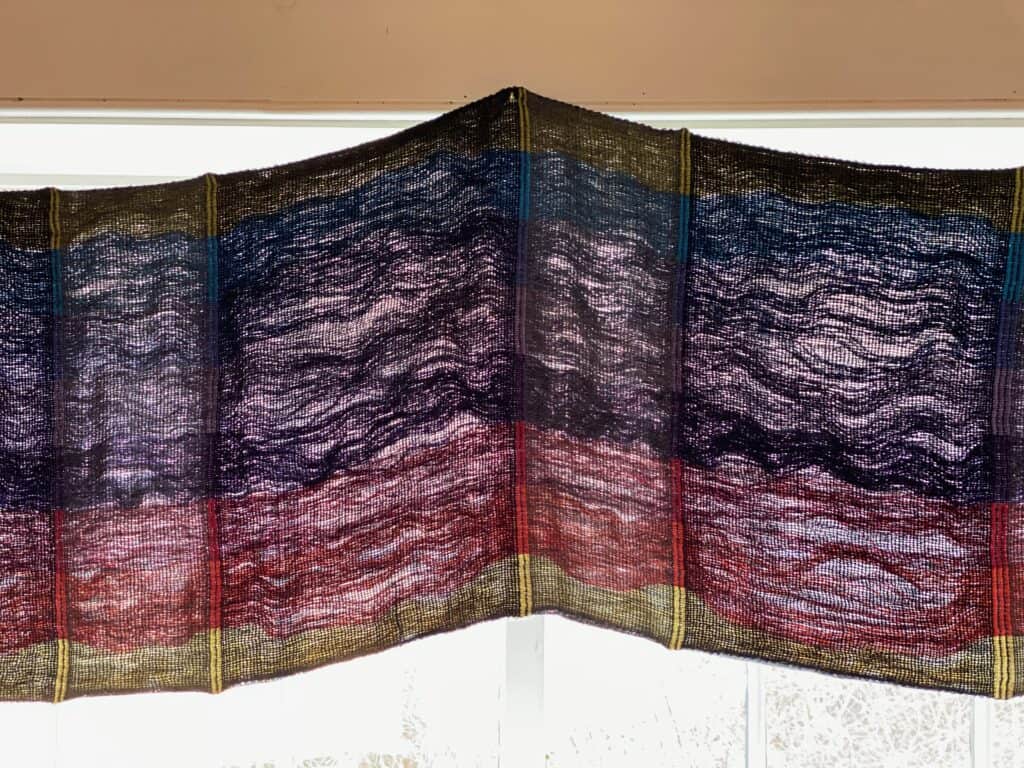
Don’t Beat Yourself Up!
I have been thinking about “beat” quite a bit lately, and I wanted to share some of my (swirling and contradictory) thoughts and recent experiences. My natural reaction (as a skeptic and contrarian) to the hand-weaving community’s obsession with “squaring one’s beat” has been, “if that’s your bag, go for it.” I couldn’t really find a burning desire to change my own approach, which up until now has been: find a good sett, get a natural beat for the fabric and eyeball it from there. This approach has taken me far because it works a lot of the time, makes weaving fun, and allows me to wander the fields of my mind while I weave, without having to come back to earth, tape measure in hand. And even if “not caring” isn’t really a good approach to teach, I believe it is important for new weavers to cultivate the joy and freedom of the craft before being too burdened with “the rules.”
So, it turns out I am not a “new” weaver any longer (29 plus years at the loom – I would write WTF if my kids wouldn’t find it so cringe-worthy). And I still believe that joy and freedom trump the rules, particularly in an arena that is overwhelmingly populated by people looking for a satisfying creative outlet rather than a profession.
However, “satisfying” has new meaning for someone who has been at it for so long, and perfecting one’s craft is part of that satisfaction. I have three recent experiences with “beat” that prompted this post. The first is a pattern I have been working on for the Plain Weave Etsy site for linen placemats. The pattern is one I created for a Vävstuga class a few years ago. It interested my “pattern partner” Véronique Perrot. She wanted to re-invent the pattern as napkins, but I (for all my freedom chatter) liked the “old.” I had designed it specifically for placemats and wanted to do placemats. Consequently, we decided to do a duet – she on napkins, me on placemats. We used different weights of Euroflax Linen, and had a ball coming up with our own treadling variations and colorways.

Notice the slightly elongated “dots” and corner motifs

Véronique’s stack o’ napkins in lovely fine linen (notice that she DID square her beat).

This is the counter argument – I was in a creative flow, thinking about treadling variation and color details, and so maybe (okay definitely) didn’t think about squaring my beat.

Second time’s a charm

Again the elongated corner motifs
I wrote my pattern to be squared, and adjusted my own repeat count to account for my less-than-square beat, so that I got the placemat dimensions I wanted, but urged the “readers” to square their own beats. As I was editing the pattern, I began to worry that giving the specs based on a square beat while not squaring my own was problematic. What if the sett made it too hard to square? So, I decided to re-weave the mats and really focus on the beat. The result was very interesting to me. The pattern was easy enough to square using a double beat, and lo and behold, I actually preferred the squared fabric once it was off the loom and finished. I had designed it to be a dense fabric that lay flay on the table and didn’t ruck up when plates and cutlery were moved around on it, and the slightly more dense version was better in all ways. It looked better, it felt better, and it functioned better. In the don’t-sweat-the-small-stuff counter argument, “we” would argue that it is only 2 picks off 28 ppi vs 30 ppi. Dang it. I’d better find my tape measure. The other (obvious to some) advantage was that the repeat count could be woven as designed rather than tweaked and adjusted, so any extra effort expended on squaring was compensated for by not having to tweak the repeats.

Notice that the “dots” are dottier and the corner motifs pleasingly symmetrical – this pic shows the new placemats at the right and a re-sleyed variation for towels at the left.
Staying on this same “beat” . . . I was also working on a pattern with an entirely different beat issue. For the Hidden Spectrum scarf – a design that is basically a wool tube encasing free flowing colorful tencel – it is essential that one doesn’t square the beat. In order for the “tube” to remain gauzy and open so that the colorful tencel has a chance to peep through, the weaver has to “place” the weft at about 2/3rds the sett. A square beat would make for opaque outer layers and a stiff scarf.

So, once again I was challenging my own weaving mantra of “whatever will be will be.”

You may wonder why I didn’t sett the outer layers at a looser epi so that I could square and have a gauzy cloth, but I found in my sampling (yes, I did sample –yes, it was a “sample” scarf) that it was a little too unstable at a looser sett.
And the final tale in the “take a beating” trilogy is a double-wide double weave blanket I currently have on the loom. This is another case in which there is a tension (so much pun potential

As you can see by the somewhat wiggly but still okay diagonal, it is not a natural beat. The good news is, that once tension is off and the twill takes charge, both the diagonal and the fold fall into place, and the wiggle disappears. (BTW this is a 3/1 twill – highlighting the glorious warp colors of Jaggerspun Green Line wool).

An 8-shaft pattern threaded on 24 you ask . . . heddles y’all!
After a lot of mulling and 29 plus years of weaving, my conclusion is “okay, okay beat is important,” but I will add that beat doesn’t beat joy and creative flow in the big scheme, and you can always choose to let your creative spirit flow freely the first round, and then revisit with persnickety perfection on your tail for the second round like I did. So don’t beat yourself up, have fun, and if you have a hankering look for these new patterns on the Plain Weave Etsy site Flexi-Flax Table Linens and Hidden Spectrum Scarf
Happy weaving and happy, hopeful, peaceful 2022





Denise Watson
Very cool article. Any way we can get purchased patterns in WIF?
Mary THOMAS-REILLY
I love your new patterns! I will be breaking half my new years resolution for these two patterns. But that scarf is going to use up a lot of that tencel I have and that will help the second half of the resolution. I am so excited these will be fun. I just took the scarf off the loom from your last post. I didn’t get as much ribbing as I hoped for but it is still really yummy. I am not sure it was my beat, the sett, or the two different weight yarns. Thank you.
Elisabeth Hill
Thanks Mary – you’re a star!!!
I just did a new collapse scarf, and sett it tight (10/2 @ 30 epi) and got super collapse. I then re-sleyed to 24 and just got a slightly textured fabric. I was using 9/1 singles as weft and the tried 20/2 as weft. The singles def worked better, but it was the sett that really made a difference. I can email you pix if you like.
Mary THOMAS-REILLY
I would love to see your results. I used 10/2 Tencel Merino for warp and 15/1 alpaca for weft. I first tried the recommend sett of 18 epi then changed to 24. Looking at your numbers I may try 30 next time. The new scarf looks like a lot of fun! I don’t have the yarns you used so my results will be different. I have one on the loom that is taking time to get warped. I need several breaks from it
Elisabeth Hill
I’ll email you pix tomorrow – cant wait to see your scarf results
Len Klein
I just found your blog, what a joy to read thank you.
Elisabeth Hill
Hi Len, So sorry for the delayed response – I have been a negligent blog tender lately! Thank you, I really appreciate the feedback. It is a funny feeling because I often feel like I am writing into the void or maybe more maybe accurately talking to myself, so hearing that someone has found and enjoyed the blog is very gratifying. Thanks again!
Maggie Byckalo, Burlington, Ontario, Canada
Hi Elizabeth
I am trying to weave your lovely Happy Napkins in HW November/December 2018.and am not able to get the same result in the border. I have also bought your Etsy Silverware Kit Napkins. Is the threading in the magazine correct or should I have used your Draft 2:Twill threading from your Etsy pattern? Thank you so much.